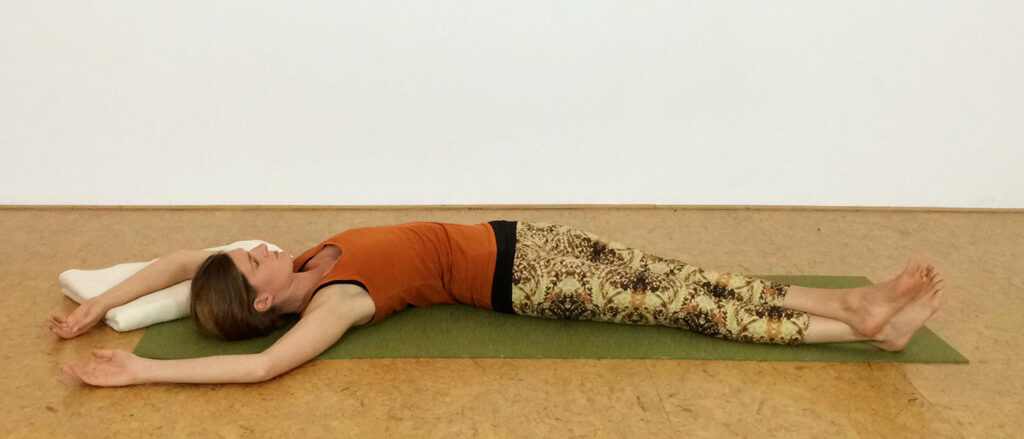Bring the attention to your breath and use it to create space on the right side of the body. Whenever you feel that your body has yielded to the side bending, you can change the crossing of the ankles to increase the sidebend. Only do this if both your sittingbones can stay on the floor and feels comfortable for your lower back. Feel free to change the crossing of the ankles back, or place the feet next to each other when the sensations become uncomfortable. Also, if your arm is starting to tingle, bring it alongside your body to allow the circulation to return.
Bananasana is also a great pose to practice Viloma breathing. Here, you divide the inhalation into four equal parts. The first part is directed towards the right hip, lower belly and lower back. After the first part of the inhale the is a short pause, where you keep the airway open. Or, if that is more comfortable, a tiny exhale can also be nice instead of the pause. Then the second part of the inhale is directed towards the waist, pause again. Third part towards the ribs and the fourth part towards the right shoulder. After the last pause a long, slow exhale follows and the cycle can begin again. Repeat the viloma breathing for several rounds, as long as it is comfortable, then return to normal breathing.
Stay in the pose for at least 5 minutes, becoming aware of the movement within the stillness. The breath and the subtle sensations that continuously change.
When the time has come to come out of the pose, first uncross you feet and bring your arms down. Slowly, with awareness, move your upperbody back to the center, then bring your feet back to center. Either lie still for a few breaths, notice the effect of the pose, or hug the knees towards the chest and gently rock from side to side, inviting some movement back into your body.
Then move yourself to the left side of the mat and repeat for the left side of the body. After you’ve been in bananasana on both sides, whenever you’re ready, roll to the side and bring yourself up to a seated position for a few breaths. Then continue with your day.
If you enjoy these kinds of practices, check out my online self-guided journeys. I’ve recorded The Art of Not-Doing restorative packs for you. With these packs you can chose which 20 min restorative practice you want to practice. It also included separate audios with a different guidance once you’re in the pose, to vary the practice.
You can find them here in the shop.

